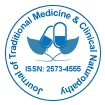Notre groupe organise plus de 3 000 séries de conférences Événements chaque année aux États-Unis, en Europe et en Europe. Asie avec le soutien de 1 000 autres Sociétés scientifiques et publie plus de 700 Open Access Revues qui contiennent plus de 50 000 personnalités éminentes, des scientifiques réputés en tant que membres du comité de rédaction.
Les revues en libre accès gagnent plus de lecteurs et de citations
700 revues et 15 000 000 de lecteurs Chaque revue attire plus de 25 000 lecteurs
Indexé dans
- Indice source CAS (CASSI)
- Google Scholar
- Sherpa Roméo
- Ouvrir la porte J
- JournalSeek de génamique
- Recherche de référence
- Répertoire d’indexation des revues de recherche (DRJI)
- Université Hamdard
- EBSCO AZ
- Publons
- Fondation genevoise pour l'enseignement et la recherche médicale
- Euro Pub
- ICMJE
Liens utiles
Revues en libre accès
Partager cette page
Abstrait
Identification of Potential Antibiotic-Like Compounds in a West Mongolian Mumijo Extract with Traditional Applications
Tulgaa EnkhOyun
Mumie has been used by human being since approximately 3000 years ago. It is seen that mumie is used in both oral and topical administrations in folk medicine and it has no any adverse effects. Ancient healers were using mumie for curing bone fractures, joint dislocations, poliomyelitis, facial nerve paralysis, gastro- intestinal ulcers, intoxications and tuberculosis.
According to information by the researchers, mumie contains proteins, amino acids, phospholipids, gumine, benzoic acid as well as numbers of metallic elements. Ionized elements are essentially important for both animal and human bodies, and therefore their deficiency is compensated via diets, water and plants, which can provide with necessary nutrients. Therefore, compounds, containing so many types of matters like mumie are believed to be of essential importance in human and animal health.
This study investigates the medicinal properties of a substance traditionally used for treating various skin ailments, wounds, burns, ulcers, and inflammatory disorders of the digestive system. Historical use suggests potential efficacy against bacterial inflammation. To explore its antibiotic potential, we conducted a comprehensive analysis of the extract, purifying natural mineral medicinal compounds and utilizing a violet-red spectrophotometer (USA-BIO-RAD). Our analysis revealed the presence of significant antibiotic-like compounds in the extract, including Terramycin hydrochloride or Oxytetracycline hydrochloride at a concentration of 838.64% and pantothenic acid with hemicalcium salt at 835.47%. These findings imply promising antibiotic properties in the substance, aligning with its historical medicinal applications. Further research is warranted to validate these properties and assess the safety and efficacy of the extract for medical purposes.
Revues par sujet
- Agriculture et Aquaculture
- Biochimie
- Chimie
- Food & Nutrition
- Génétique et biologie moléculaire
- Géologie et sciences de la Terre
- Immunologie et microbiologie
- Ingénierie
- La science des matériaux
- Le physique
- Science générale
- Sciences cliniques
- Sciences environnementales
- Sciences médicales
- Sciences pharmaceutiques
- Sciences sociales et politiques
- Sciences vétérinaires
- Soins infirmiers et soins de santé
Revues cliniques et médicales
- Allaitement
- Anesthésiologie
- Biologie moléculaire
- Cardiologie
- Chirurgie
- Dentisterie
- Dermatologie
- Diabète et endocrinologie
- Gastro-entérologie
- Immunologie
- La génétique
- Maladies infectieuses
- Médecine
- Microbiologie
- Neurologie
- Oncologie
- Ophtalmologie
- Pédiatrie
- Recherche clinique
- Soins de santé
- Toxicologie

 English
English  Spanish
Spanish  Chinese
Chinese  Russian
Russian  German
German  Japanese
Japanese  Portuguese
Portuguese  Hindi
Hindi